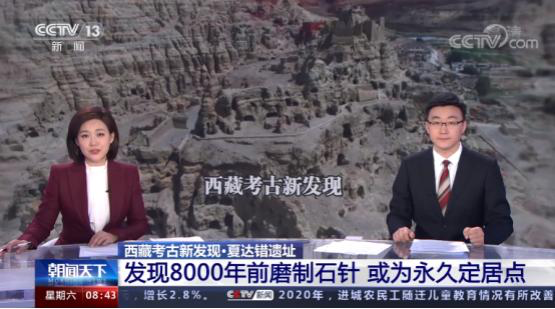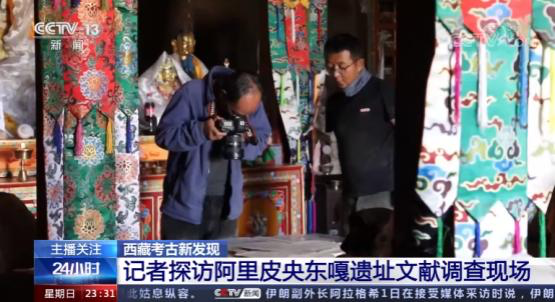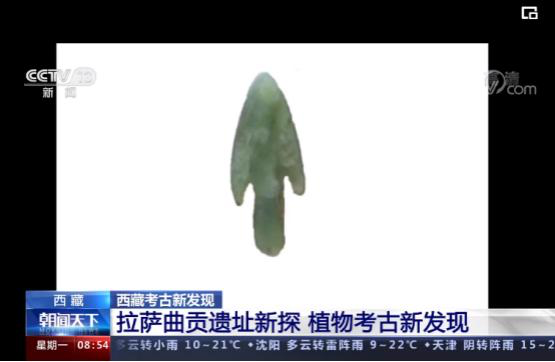This year is the centenary of the Chinese Archaeology and the 87th anniversary of our university's archaeological research. Since the National Cultural Heritage Administration launched the joint archaeological research of Tibet in 2018, SCU’s School of Archaeology and Museology(SAM) has vigorously participated in the joint archaeological research of Tibet and made significant progress in plateau Paleolithic, Neolithic, early Metal Age, Tubo Archaeology, Buddhist Archaeology and so on. From May 1 to May 4, 2021, the CCTV news channel broadcast a series of reports in its "New Discoveries of Tibetan Archaeology" program, featurng the new achievements SCU had made in Tibetan archaeology. The reports have aroused widespread attention in the society.

On May 1, CCTV reported SAM’s archaeological discoveries at Xiadacuo in Western Tibet.
The Xiadacuo site is located in the south of Pangong Tso in Ali area, with an altitude of 4,368 meters. As early as 1992, Prof. Huo Wei and Prof. Li Yongxian of Sichuan University collected 92 stone artifacts on the lakeside, including "hand axes" that may belong to the Paleolithic age. After years of investigation by two generations of SCU’s archaeologists, they finally confirmed the original mounds in 2019. In 2020, a 49 square meter excavation was conducted here, and the excavated materials are rich. The dating results show that they belong to the period from 8,500 to 7,500 years ago. In the excavation of this lakeside hunting and gathering site, the archaeologists also unearthed the earliest grinder on the Qinghai-Tibet Plateau: a stone needle with perforation.
Report link: [Zhaowen Tianxia](Morning News) A new archaeological discovery in Tibet: the discovery of 8,000 year old grinded stone needles at Xiadacuo, possibly a permanent settlement site_ CCTV official website-cctv-13 (cctv.com)

On May 2, CCTV continued to report on the joint investigation that SAM and China Tibetology Research Institute carried out at the Piyang/Dongga Relics Site of Ali area, Tibet. For the first time, this investigation basically confirmed that there were Tibetan scriptures in Ali area. In addition, the team also found a Buddha flag from the mainland of Yuan Dynasty in Luodang Temple in Ali area of Tibet. Its shape, material and function are very similar to those of the mainland since Tang Dynasty, thus bearing proof to the cultural exchange and integration between Ali and the mainland during Yuan Dynasty.
Report link: [24 hours] New discovery of Tibet archaeology- reporter visits the document investigation at Piyang/Dongga in Ali area_ CCTV official website-cctv-13 (cctv.com)

CCTV reported again on SAM’s evacuation in the Qugong Relics Site on May 3. The Qugong site, first excavated nearly 30 years ago, is the most famous prehistoric site in the heart of Tibet, which is a landmark discovery in Tibetan archaeology. By virtue of advanced analysis methods, the new excavation reconstructed the complex life forms of the site, providing extremely important research materials for the Neolithic archaeological research in Tibet.
Report link: [Zhaowen Tianxia](Morning News) New archaeological discoveries in Qugong, Tibet_ CCTV official website-cctv-13 (cctv.com)

On May 4, CCTV continued to report on the archaeological discoveries and gains of SAM at the site of Piyang/Dongga, Ali, Tibet. The archaeological excavation of three consecutive years shows that the relics of Piyang/Dongga can be dated as early as the 7th century B.C. and as late as the 11th century A.D., which lasted for more than 1,700 years. It is the most complete site group with known age sequence in Western Tibet, which has important historical research value. Prof. Huo Wei, who has done archaeological research on the site of Piyang/Dongga in the past 30 years, believes that the continuous archaeological work has made it clear that the Piyang/Dongga site has a history of more than 1,700 years, which is particularly important for the study of Western history and culture.
Report link: [Zhaowen Tianxia](Morning News)] The new discovery in Tibet Archaeology at Piyang/Dongga: a cultural relics site group that has existed for more than 1700 years_ CCTV official website-cctv-13 (cctv.com)
In 1978, Prof. Tong Enzheng led the archaeology teachers and students of Sichuan University to the excavation at the Karuo site in Changdu, opening a new chapter in the study of ancient civilization on the Tibetan Plateau. Over the past 43 years, generations of archaeology teachers and students of SCU have worked hard in the high altitude and oxigen deficit Tibetan Plateau, and established our school's advantageous position in this field.
The Chinese names begin with family name in this report.
